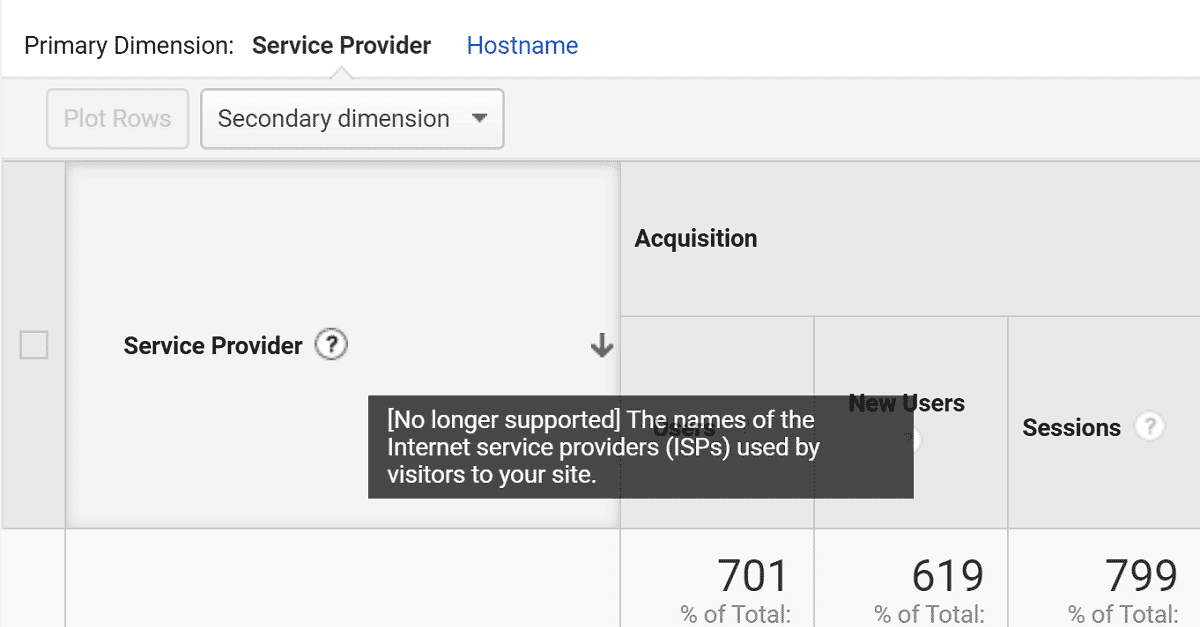Step-by-Step Guide: Leveraging Secondary Dimension in Google Analytics
Step-by-Step Guide: Leveraging Secondary Dimension in Google Analytics
Blog Article
Unlock Deeper Insights With Second Measurement in Google Analytics
With the vast stretch of information readily available in Google Analytics, the use of additional dimensions can considerably improve your logical capabilities. These added layers of information provide a nuanced point of view that can brighten complex details within your primary metrics. By strategically integrating secondary dimensions right into your evaluation, you can uncover important understandings that might or else stay obscure. The capacity to divide and analyze customer behavior with higher accuracy opens up a world of possibilities for optimizing methods and improving efficiency.
Understanding Primary Vs. Second Dimensions
On the various other hand, secondary measurements allow you to more explore your primary measurement information. By including a secondary dimension, you can layer on additional information to your key measurement, enabling an extra granular analysis. If your key measurement is the source/medium with which individuals got here on your site, adding an additional measurement like geographical place can expose where those users are situated geographically.
Using Secondary Measurements Effectively
Successfully using secondary measurements in Google Analytics boosts the depth and granularity of data analysis, supplying valuable insights right into user actions and patterns. By incorporating secondary measurements along with main measurements, experts and online marketers can dig much deeper right into the specifics of user communications on their internet sites. Additional dimensions allow customers to segment and filter main measurement information further, providing a much more in-depth view of individual behaviors, demographics, and communications. This can be specifically helpful when trying to comprehend the impact of specific variables on user engagement, such as the browsers or devices they are using, the sources of their web traffic, or their geographic areas.
Moreover, second measurements make it possible for users to compare and contrast various data factors within a single record, facilitating a much more thorough analysis of user actions patterns. By leveraging second dimensions efficiently, organizations can uncover covert understandings, enhance their advertising methods, and boost the overall individual experience on their websites.
Checking Out Usual Secondary Dimension Combinations
To even more examine individual actions and trends in Google Analytics, it is beneficial to discover common mixes of secondary measurements. Some usual additional measurement combinations that offer valuable insights include analyzing web traffic resources with customer locations to recognize where internet site site visitors are coming from geographically and how they discovered the website. Taking a look at individual behavior metrics with second measurements such as demographics or rate of interests can aid in targeting certain audience sectors more successfully.
Applying Additional Measurement in Custom-made Information
Using secondary measurements in custom-made reports enables a much more detailed evaluation of data in Google Analytics, improving the depth of understandings gotten. When producing customized reports in Google Analytics, including second dimensions can offer a much more thorough view of just how various measurements interact with each other. This attribute enables individuals to delve much deeper into their data and uncover important connections that may not be right away obvious.
By using secondary measurements in custom records, users can get a better understanding of their web site or app website traffic. For instance, combining the main dimension of "source/medium" with the secondary dimension of "landing web page" can reveal which touchdown web pages are carrying out best for web traffic coming from certain sources. This understanding can help marketing experts maximize their campaigns and improve overall conversion prices.

Enhancing Data Visualization With Additional Dimension
When discovering information in Google Analytics personalized records, integrating additional measurements not just offers an extra comprehensive analysis however additionally improves the graph of insights with information visualization. By adding a secondary dimension to your records, you can enhance the way information is provided, making it less complicated to determine patterns, patterns, and relationships within your website's efficiency metrics.
Additional dimensions can assist you segment your data even more, permitting a deeper understanding of user actions and interactions on your website. When trying to isolate certain variables that might influence your website's performance., this enhanced degree of granularity can be especially useful.

Final Thought
To conclude, leveraging second measurements in Google Analytics enables for an extra comprehensive analysis of data, causing deeper understandings and even more enlightened decision-making. Secondary Dimension in Google Analytics. By adding additional layers of details to main data sets, marketers and experts can reveal surprise fads, patterns, and correlations that supply a granular sight of user behavior and communications. This boosted degree of understanding allows optimization of campaigns and customized approaches for particular audience sections, eventually boosting efficiency and conversion prices
On the other hand, second dimensions permit you to additional study your key measurement information. By including a secondary measurement, you can layer on additional info to your primary dimension, making it possible for an extra granular evaluation. If your primary measurement is the source/medium with which customers got here on your website, including an additional measurement browse around this web-site like geographic place can expose where those users are located geographically. By incorporating second measurements along with main measurements, marketing professionals and analysts can delve deeper right into the specifics of customer interactions on their internet sites. Second measurements allow users to sector and filter main measurement information additionally, supplying a more comprehensive sight of user demographics, habits, and interactions.
Report this page